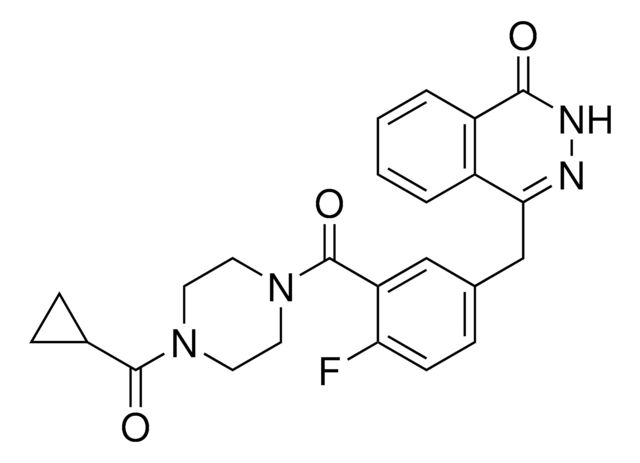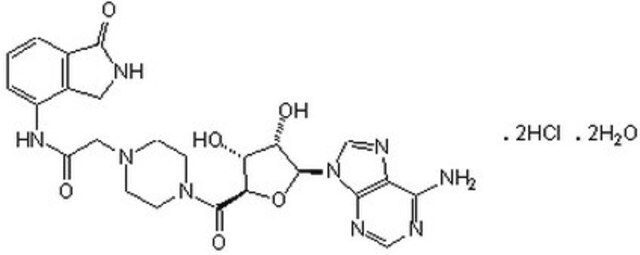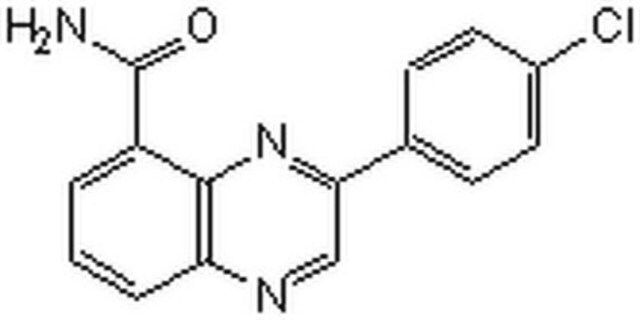P4365
PJ-34 hydrochloride hydrate
≥98% (HPLC), powder
Synonyme(s) :
PARP Inhibitor VIII, PJ 34 HCl, N-(6-Oxo-5,6-dihydrophenanthridin-2-yl)-(N,N-dimethylamino)acetamide hydrochloride
About This Item
Produits recommandés
Niveau de qualité
Pureté
≥98% (HPLC)
Forme
powder
Conditions de stockage
desiccated
Couleur
white to yellow
Solubilité
H2O: 22 mg/mL
Chaîne SMILES
Cl[H].[H]O[H].CN(C)CC(=O)Nc1ccc2NC(=O)c3ccccc3-c2c1
InChI
1S/C17H17N3O2.ClH.H2O/c1-20(2)10-16(21)18-11-7-8-15-14(9-11)12-5-3-4-6-13(12)17(22)19-15;;/h3-9H,10H2,1-2H3,(H,18,21)(H,19,22);1H;1H2
Clé InChI
YCALIZUKAFUQCH-UHFFFAOYSA-N
Application
- as a poly(ADP-ribose) polymerase (PARP) inhibitor 1 in rats to test the effect of PAPR1 in neuropathic pain
- as a component of protein extraction buffer to enable visualization of the high-molecular-weight smear of PARylated proteins in various cell samples
- as PARP inhibitor in murine MLE-12 epithelial cell line
Actions biochimiques/physiologiques
Code de la classe de stockage
11 - Combustible Solids
Classe de danger pour l'eau (WGK)
WGK 3
Point d'éclair (°F)
Not applicable
Point d'éclair (°C)
Not applicable
Équipement de protection individuelle
Eyeshields, Gloves, type N95 (US)
Certificats d'analyse (COA)
Recherchez un Certificats d'analyse (COA) en saisissant le numéro de lot du produit. Les numéros de lot figurent sur l'étiquette du produit après les mots "Lot" ou "Batch".
Déjà en possession de ce produit ?
Retrouvez la documentation relative aux produits que vous avez récemment achetés dans la Bibliothèque de documents.
Notre équipe de scientifiques dispose d'une expérience dans tous les secteurs de la recherche, notamment en sciences de la vie, science des matériaux, synthèse chimique, chromatographie, analyse et dans de nombreux autres domaines..
Contacter notre Service technique




